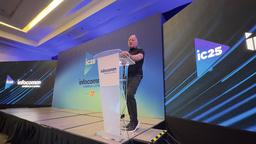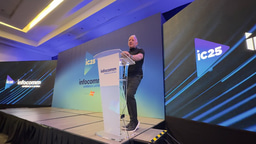AI Fun Facts

A version of this article exists on rAVe [PUBS] written by Megan A. Dutta
Artificial Intelligence (AI) has changed the way we interact with technology. So, let’s learn more about this powerhouse. Here are some fun facts about AI:
AI Fun Fact 1
The term “artificial intelligence” was publicly debuted in 1956 at the Dartmouth Conference; it is widely believed that this was the start of the field of AI with John McCarthy presiding over a group of top researchers. However, the term first appeared in 1955 in a proposal for a “2 month, 10 man study of artificial intelligence” submitted by John McCarthy (Dartmouth College), Marvin Minsky (Harvard University), Nathaniel Rochester (IBM) and Claude Shannon (Bell Telephone Laboratories).
AI Fun Fact 2
The term “machine learning” was coined shortly after AI. In July of 1959, Arthur L. Samuel’s report, “Some Studies in Machine Learning Using the Game of Checkers,” appeared in the IBM Journal. In the report, Samuel details how a computer was programmed to play the game of checkers better than the person who did the programming.
AI Fun Fact 3
The first AI-powered chatbot, ELIZA, first appeared in 1966. Yes, you read that right. ELIZA made its debut 48 years before Amazon’s Alexa. ELIZA, named after the fictional Eliza Doolittle, would essentially rephrase the user’s input in the form of a question. So, say you told ELIZA about some weekend plans that excited you—it would respond “What about those plans excites you?” After seeing ELIZA in action, MIT’s Joseph Weizenbaum, ELIZA’s creator, warned the public about the dangers of letting AI play such a large role in society.
AI Fun Fact 4
AI can be used for art – Harold Cohen’s AARON. Cohen, a pioneer in computer art, graduated from University of London’s Slade School of Fine Art in 1950 and began his life as a painter. Almost 20 years later, Cohen was looking for his next passion and became interested in computer science. From there, he combined his two interests and created AARON, the collective name for a series of computer programs that create original artistic images.
In 2018, famed auction house Christie’s offered up Portrait of Edmond Belamy, a painting created by generative adversarial network (GAN) by Obvious, an collective featuring Hugo Caselles-Dupré, Pierre Fautrel and Gauthier Vernier.
“The algorithm is composed of two parts,” said Caselles-Dupré. “On one side is the Generator, on the other the Discriminator. We fed the system with a data set of 15,000 portraits painted between the 14th century to the 20th. The Generator makes a new image based on the set, then the Discriminator tries to spot the difference between a human-made image, and one created by the Generator. The aim is to fool the Discriminator into thinking that the new images are real-life portraits. Then we have a result.”
The painting sold for an astounding $432,500, which was nearly 45 times the estimated sale price.
AI Fun Fact 5
The technology community is actively working to detect and combat “deep fakes” a.k.a using artificial intelligence called deep learning to create images, audio and video of fake events. For example, in the clip below a popular deep fake creator, Shamook, replaced Tom Holland’s face with Toby Maguire’s in this “Spider-man: No Way Home” clip.
To avoid being duped by a deep fake, the industry has proposed various techniques like analyzing facial and body movements, examining inconsistencies in lighting and shadows and investigating artifacts and anomalies in the manipulated content. These efforts aim to empower individuals, organizations, and platforms to identify and mitigate the spread of malicious deep fakes, thereby promoting digital trust and authenticity.
Curious to hear more AI facts? Read the full article on rAVe [PUBS].






Please sign in or register for FREE
If you are a registered user on AVIXA Xchange, please sign in